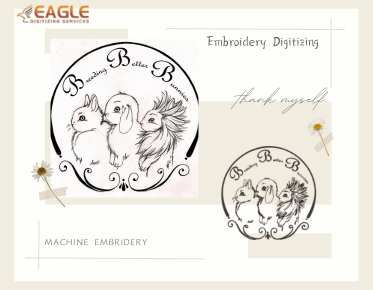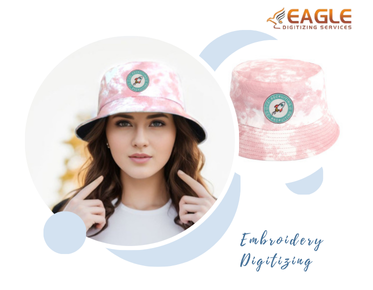Using Vector Files for Screen Printing vs Embroidery – What’s the Difference?
Vector files are the backbone of the graphic design industry. They are crucial in both screen printing and embroidery but serve different purposes in each. Understanding the nuances of how vector files are used in these two industries can significantly enhance the quality and efficiency of the products. This blog post aims to delve into the intricacies of using vector files in screen printing versus embroidery, highlighting their differences, applications, and potential impact on business operations.
The Role of Vector Files in Screen Printing
Screen printing relies heavily on vector files due to their scalability and precision. Unlike bitmap images, vector files do not lose quality when resized, which is essential for maintaining the crispness of printed designs on various materials such as fabrics, glass, and wood. The ability to separate colors into different layers in a vector file is a significant advantage for screen printers who need to create stencils for each color in the design.
In screen printing, the use of vector art services can streamline the pre-printing process. These services allow for precise color separations and adjustments, ensuring each layer of the print aligns perfectly during production. The flexibility of vector formats like AI, PDF, and SVG is beneficial for artists and printers aiming for high-quality outputs efficiently.
Vector Files in Embroidery
The application of vector files in embroidery focuses more on detail and intricacy. Embroidery digitizing translates these vector designs into stitch commands for embroidery machines. The precision of vector lines is crucial as it affects the stitching paths and outcomes. Unlike screen printing, where solid colors are printed, embroidery uses colorful threads to recreate the design, which requires different considerations during the vector to embroidery conversion.
Embroidery digitizing services, like those provided by Eagle Digitizing, transform vector files into a format that embroidery machines can understand, often using formats like DST or PES. The company's expertise ensures that detailed vector designs are accurately converted, considering factors such as stitch type and density, which are vital for the final fabric product's appearance and durability.
Differences in File Processing
The processing of vector files differs significantly between screen printing and embroidery. In screen printing, the focus is on precise color separations and scalable designs for various material dimensions. For embroidery, vector files need to be converted with a focus on stitching paths and thread colors, as these components influence the texture and depth of the final product. Tools involved in this conversion adjust the image for stitch efficiency and minimize thread breaks, maintaining the design's integrity.
Industry Applications and Benefits
Both screen printing and embroidery benefit vastly from vector art due to the technology's capability to handle intricate designs efficiently. Industries such as fashion, promotional products, and branding can leverage high-quality vector conversions to produce vibrant and durable goods. For businesses, this means investing in reliable vector conversion services can lead to higher customer satisfaction and operational efficiency.
Moreover, utilizing vector conversion services helps in maintaining consistency across various product lines, essential for brand image and marketing. Services from companies like Eagle Digitizing offer rapid conversion times, flexible pricing, and tailored outputs that match industry standards, making them a crucial partner for businesses looking to enhance their production quality.
Why Choose Professional Services?
Opting for professional vector conversion services can save time while ensuring designs meet the precise standards of both screen printing and embroidery. Factors such as quick turnaround, accuracy, and the ability to handle large orders are why many businesses choose providers like Eagle Digitizing. The company's focus on client satisfaction and its extensive suite of services in raster to vector conversion, color correction, and image retouching make it an invaluable partner for any printing or embroidery project.
The future of vector files in screen printing and embroidery appears promising. As technology advances, the tools and methods of vector conversion will likely become more sophisticated, offering even more precise and creative possibilities for businesses. For companies, staying ahead means continually exploring new vectorization techniques and leveraging professional services to maintain a competitive edge.
The conversation about vector files in screen printing versus embroidery opens a path for greater innovation and refinement in both fields. Are you ready to elevate your brand with the efficiency and precision of vector art? Consider seeking specialized services to transform your creative vision into reality.



.png)